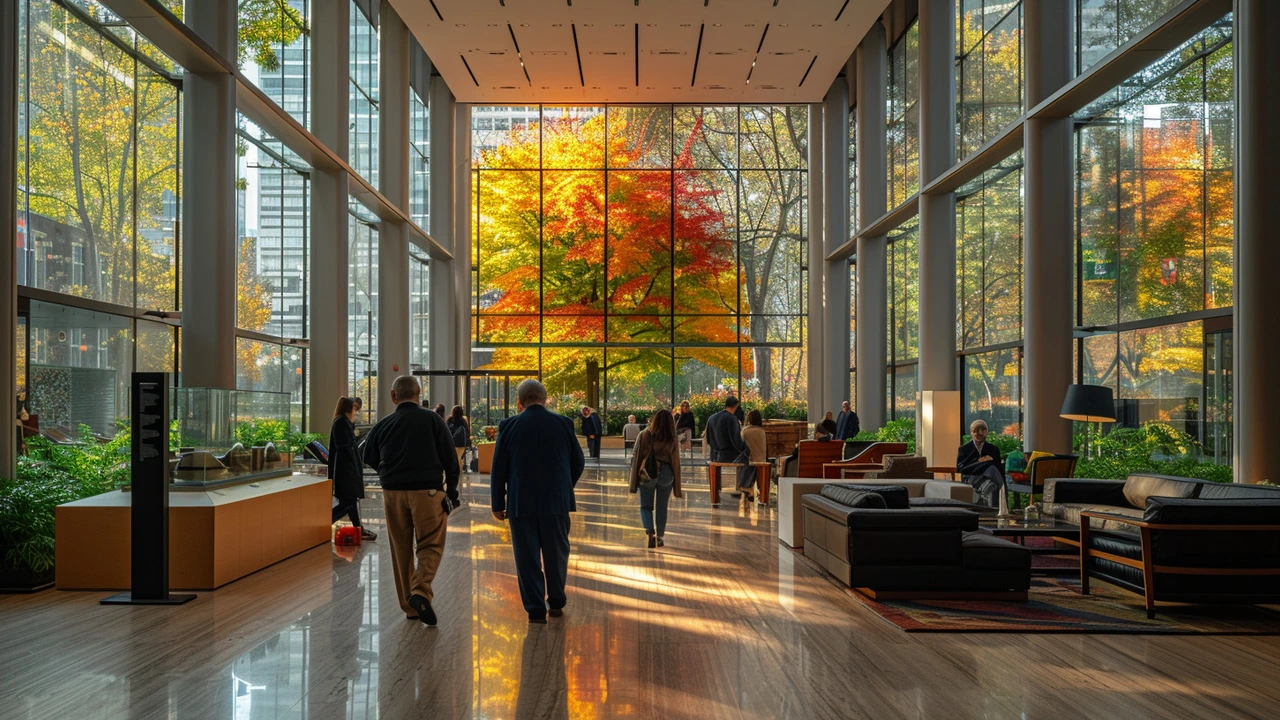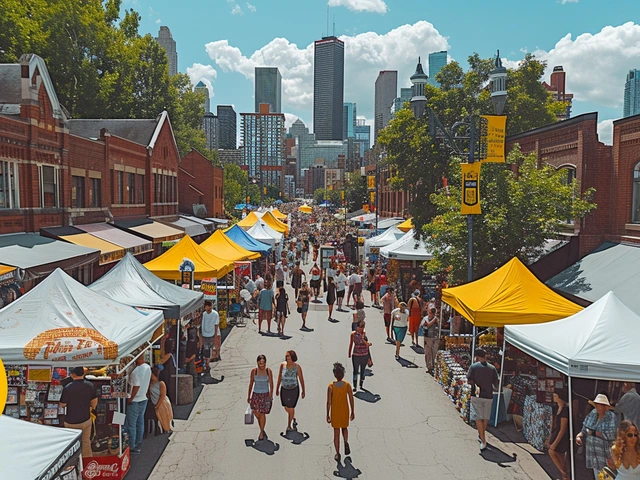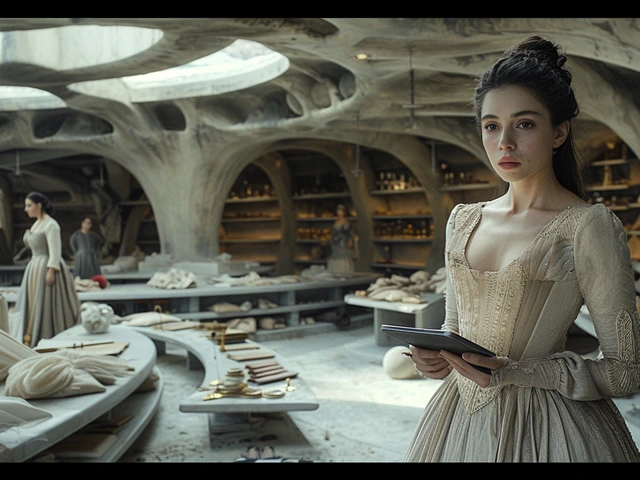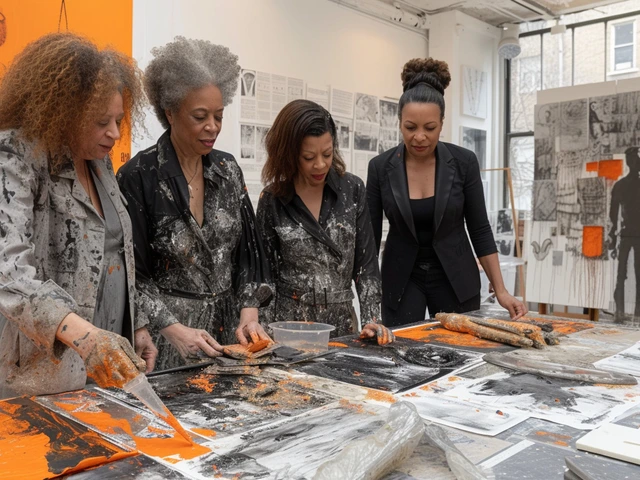The Origins of De Stijl: A Dutch Masterstroke
When we ponder about the colorful symphony of modern art and architecture, the influence of a certain Dutch artistic movement cannot be overlooked. Yes, the one that swings with primary colors and revels in geometric abstraction. It's De Stijl, also known as Neoplasticism, that burst onto the scene in 1917, a period when the world was psychedelically limping out of the throes of World War I. You might ask, "Why bother about a century-old art movement?" Well, hold onto your spectacles, for this journey through planes and primary colors is akin to following Alice down her whimsical rabbit hole!
Imagine stepping into a monochromatic world, a bit like an old black-and-white movie, then BAM! Piet Mondrian walks in with his pals, armed with visions of rigid lines and stark color contrasts. A bit like Dorothy seeing Oz for the first time, except less emerald city and more primary paradise. No, my kids Dexter and Nina still fight over crayons, but Mondrian and co fought over ideals, seeking to reflect universal harmonies through their art. It's where form meets function at the most elemental level, folks—akin to seeing the code in the Matrix, if you're into that sort of analogy.
The Ringleaders of Rigid Lines: Mondrian and Van Doesburg
If De Stijl was a circus, Piet Mondrian and Theo van Doesburg would be those jugglers who keep the primary-colored balls perpetually airborne. Mondrian, with a name that suggests he was predestined for artistic grandeur, is the visionary most synonymous with De Stijl. His compositions—canvases sliced by perpendicular lines and blocks of pure color—are iconic. He's like the DJ spinning minimalist beats, and the party just doesn't start until his paintings walk through the door.
Then there's Van Doesburg, the movement’s mouthpiece and a fierce advocate for the avant-garde. His magazine, aptly named "De Stijl," became the megaphone through which this movement shouted its philosophy to the masses. Without these two blokes, De Stijl might have just been another footnote in the book of fleeting European art trends. Instead, they ignited a spark that would blaze through the arts, one rectilinear form at a time. Like Batman and Robin if they had swapped crime-fighting for slamming geometric theory and had a better sense of color coordination.
Philosophy and Aesthetics: A Quest for Harmony and Simplicity
Now, De Stijl wasn't just about making pretty pictures for living room walls (though, let's admit, they look pretty snazzy above the sofa). No, the crux of De Stijl was as much spiritual as it was aesthetic. The goal? To find harmony and simplicity amidst the chaos of the post-war world. They dreamt of a utopia where art, design, and life could waltz together in a merry dance of simplicity and balance. These trailblazers were like philosophical bakers, kneading the dough of abstraction until the perfect loaf of universality rose in the oven of modernity.
Think less is more—way, way more. It's about reducing the noisy cacophony of the world to fundamental forms and colors. Take your everyday experiences, strain them through a De Stijlian filter, and voilà—you'd probably end up with a world that looks part Tetris battleground, part color block carnival. The movement championed a language of the vertical and horizontal to express the pure, the essential, the absolute—not unlike how a Zen garden uses rocks and gravel to distill nature's essence. So yeah, in a way, De Stijl is the Zen garden of the modernist art world, only more angular and popping with color.
Art, Meet Architecture: When De Stijl Leaped off the Canvas
De Stijl's influence wasn't content sitting cozily within the frame of a painting; oh no, it had a date with destiny across the whole spectrum of creative expression. And boy, when art met architecture through De Stijl, it was like peanut butter serendipitously colliding with jelly on a cosmic piece of toast. Architects in cahoots with this movement didn’t merely design buildings; they conceived compositions to live in. Walls, windows, and doors obeyed the same strict grammatical rules as Mondrian's paintings.
Think about the Rietveld Schröder House, designed by Gerrit Rietveld. It’s a residential remix with a De Stijl beat, breaking down the conventional structure into planes and lines that seem to play an eternal game of Twister. Living in such a house, you'd feel as though Mondrian himself plotted your life in color-coded chapters—a 3D manifesto of the movement's principles. This kind of architectural innovation pranced about the norms, tinkering with space in a manner that was, quite frankly, revolutionary. And I would know something about revolution—I did try to start a fashion trend by wearing socks with sandals, but let’s just say that didn’t pan out quite as globally impactful.
Styling Life: De Stijl’s Influence Beyond Art and Architecture
As much as De Stijl had its roots in pure art forms, the tendrils of its influence stretched further—to furniture, typography, and graphic design. Even fashion, believe it or not. That’s right, sitting on a De Stijl-inspired chair (looking at you, Rietveld's 'Red and Blue Chair') is like parking your posterior on a functional sculpture. Every day objects became canvases for a De Stijl makeover, the mundane electrified with touches of primary flair. One could argue that any time you see a pixelated jumper or a minimalist logo, De Stijl's ghost is winking at you from the design afterlife.
Then we've got the typographic terpsichore that is De Stijl’s lettering. There's a reason my son, Dexter, swooped his toy plane dangerously close to my nose trying to emulate the aerodynamic efficiency of the De Stijl alphabet—it's sleek, it's sharp, and it means business. The same adoration for simplicity and emphasis on horizontals and verticals that characterized their art manifested here. De Stijl told the world, "Hey, words aren't just vessels for meaning; they're an opportunity for visual razzmatazz!" I once tried doing my blog titles De Stijl style, but dropped it as my readers feared I’d been hypnotized by my keyboard.
De Stijl and Its Lasting Legacy in Contemporary Culture
The end of De Stijl as an active movement, around the early 1930s, wasn't so much a curtain call as it was a coronation. Its influence insidiously wove itself into the fabric of modern design and thought, establishing a legacy every bit as enduring as Versailles' Hall of Mirrors, only with fewer reflections and more primary colors. Mondrian's influence is everywhere—from the magnanimous grids of New York City to the sleek interfaces of your favorite apps. Our world has been De Stijl-doodled more than we might realize!
And contemporary culture still tips its hat to those Dutch pioneers. I recently attended a haute couture runway show (don't ask how), and I swear half the outfits were a hop, skip, and a catwalk away from being Mondrian masterpieces. Nina, busy as she is constructing LEGO empires that defy gravity, often inadvertently assembles De Stijl-esque monuments. It’s delightful, really, how this art movement continues to peek into our lives, proving that it’s more than just a historical chapter—it’s a living, breathing aesthetic.
De Stijl’s Timeless Appeal: Embracing the Artistic Spirit Today
So, why does De Stijl's appeal endure like the never-ending story of line meets square? Perhaps because it’s an idea as much as it is art—it champions an enduring ethos of simplicity and balance that has the sturdiness of LEGO bricks (sans the sharp pain of stepping on them). It's a testament to the power of minimum means for maximum effect, and let's face it, who doesn't appreciate a good bout of efficiency and clarity in this complex day and age? It’s the Marie Kondo of artistic movements—it sparks joy universally!
Whether it's in the hard edges of modern skyscrapers, the less-is-more philosophy of tech design, or even just my attempt to organize the kids' toy chaos into something resembling order, De Stijl resonates. It resonates with our innate love for balance, for distilled beauty, and the exhilarating sense of space that breathes even within rigid constraints. Maybe one day, I’ll convince Dexter and Nina to streamline their bedroom designs with a splash of red, yellow, or blue—though knowing my little renegades, they might just invent the next big art movement instead.
Remember, De Stijl isn't just a throwback to a funky era of artistic exploration—it’s a timeless companion, guiding us to find the universal within the unique, and serenity within the excitement of creation. Each brushstroke, each architectural line, each typographic experiment echoes the unyielding belief in the aesthetic power of primary shapes and colors. To walk through a world brushed with De Stijl is to stride through open doors of creative potential. So, open your eyes wide, folks—the world's a canvas, and we've got some stylizing to do!



